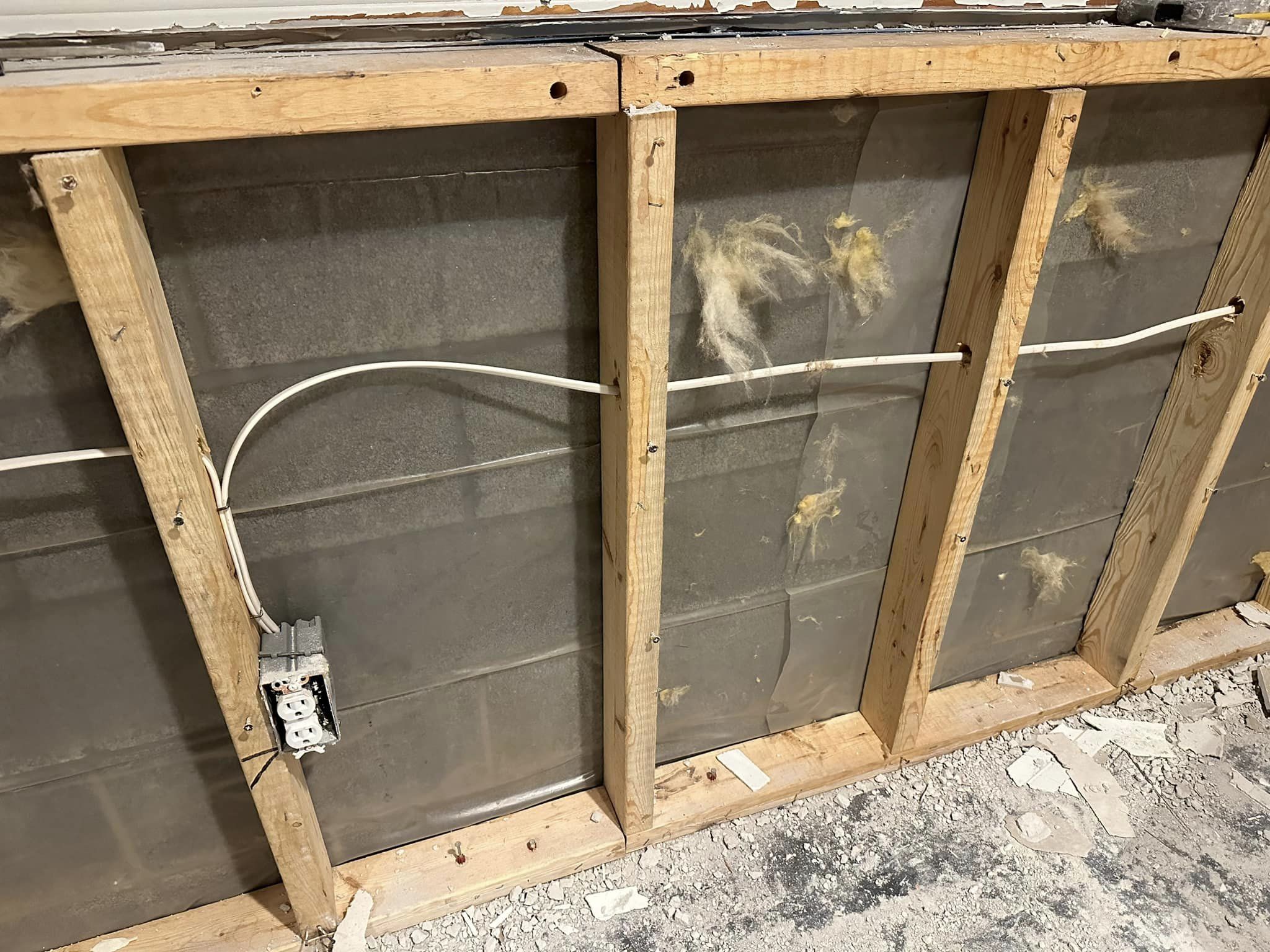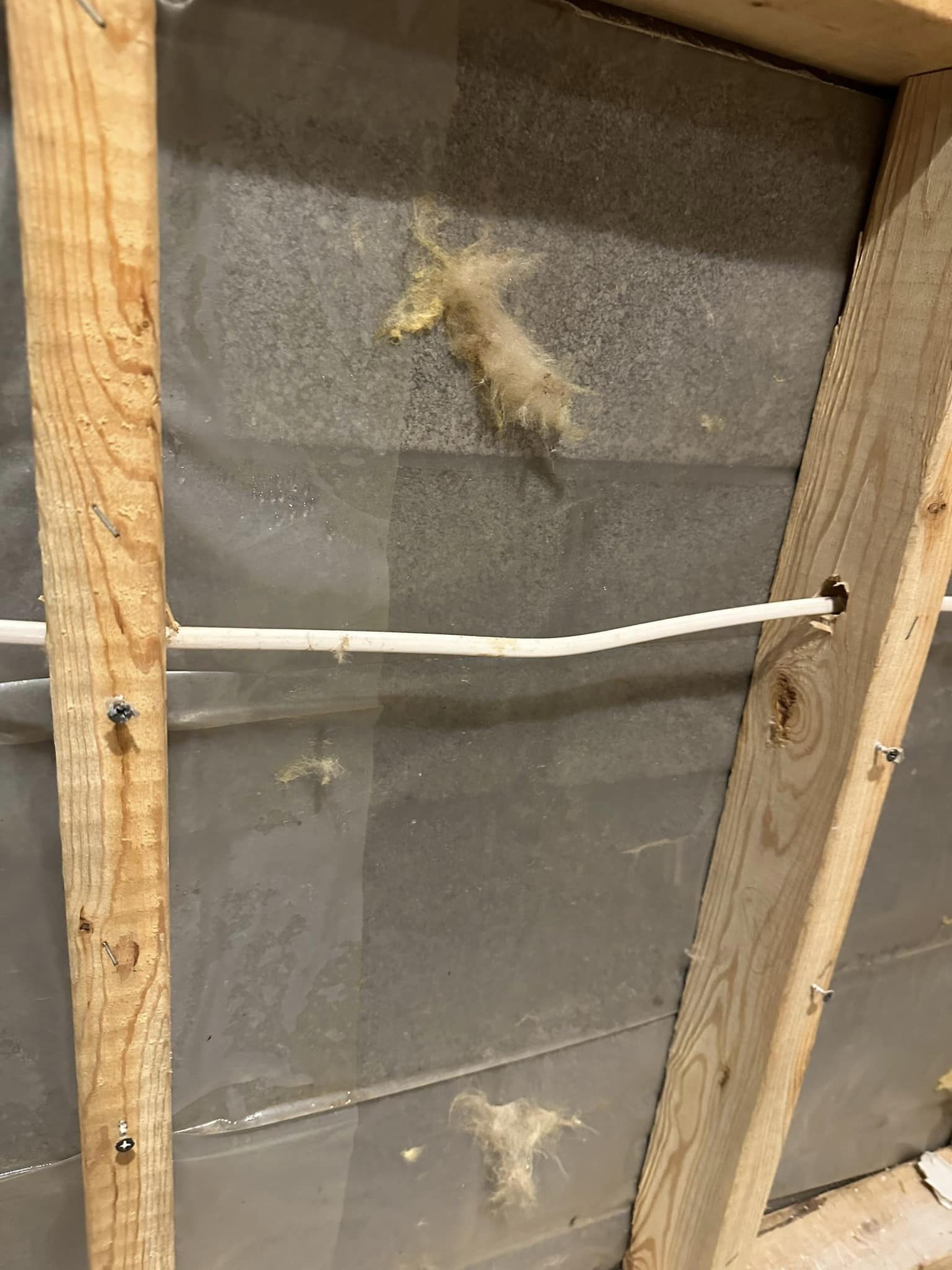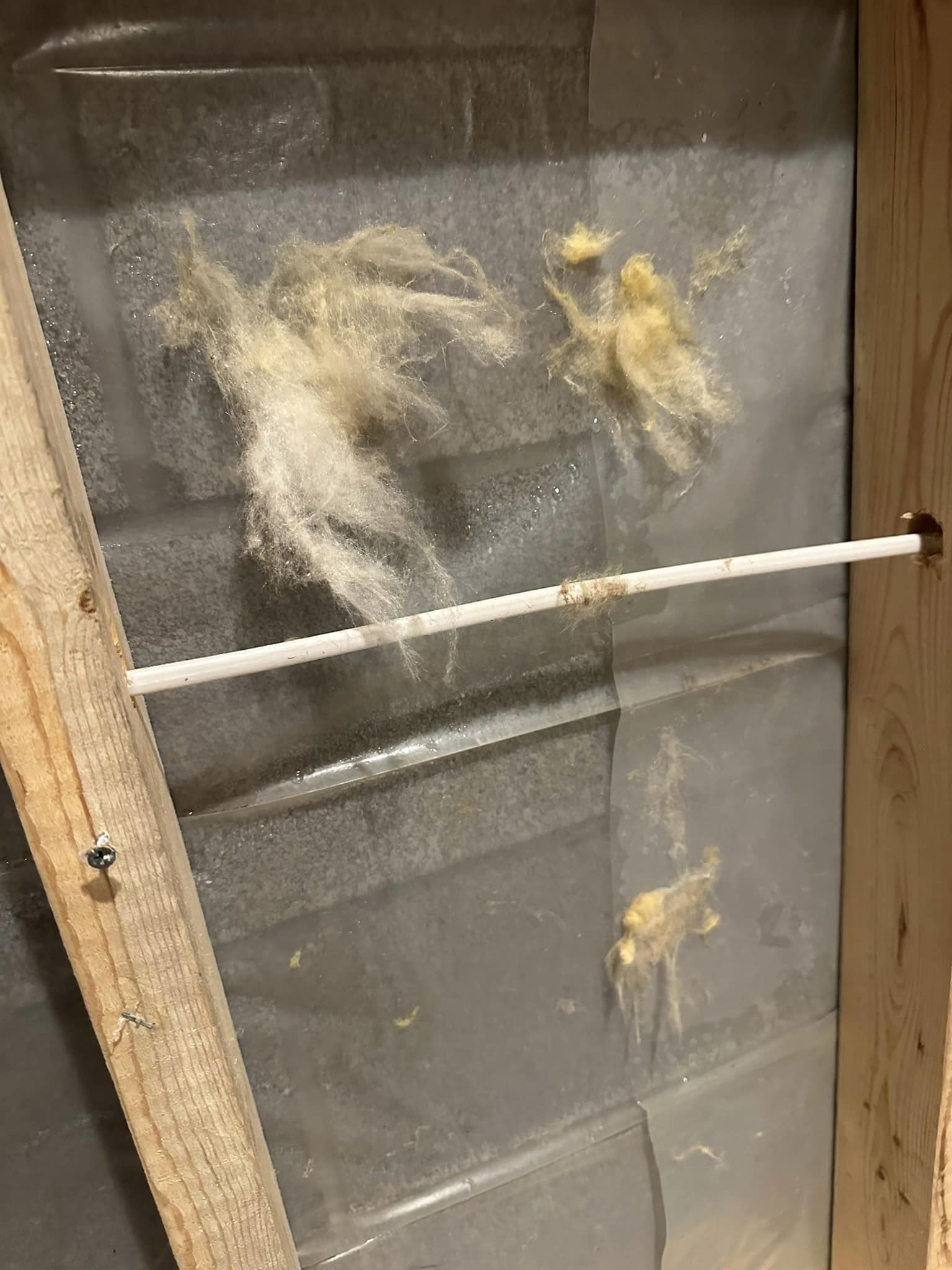How can I properly insulate my half basement-half slab house to prevent moisture issues and mold growth?
Sorry about the lengthy message! I have a house that’s part basement, part slab, built in ’96 in Western New York. We’ve been doing some renovations, and now it’s time to tackle the walls. The first floor, which is on the slab, has a block foundation wall with drywall installed over it. The setup is like a shelf, with space for running electrical.
I noticed some moisture inside the wall, with damp fiberglass insulation and the vapor barrier. I’m looking for the best way to insulate it properly and prevent future moisture build-up. One suggestion I found is using rigid foam board against the block, followed by insulation batts (I’m thinking of going with Rockwool). But I’m worried about potential mold growth between the block and foam board. Any tips on how to avoid creating a mold haven?



The latest research on this topic suggests that vapor barriers in basements are not a good idea. The hydrostatic pressure from the outside will push moisture into your cement block, and there’s nothing you can do to prevent it from the inside. Placing plastic on both sides only traps moisture. You’re fortunate that the damage isn’t worse.
I recommend cutting most of the plastic against the block, but leaving some between the block and studs to act as a capillary break. Then insulate with unfaced rockwool and drywall. This allows vapor to pass through the wall and dry inward. You may need a dehumidifier in your basement.
If excessive moisture is still entering through your foundation, you have other water management issues outside that need to be addressed.
Hey, good news – this section of the house isn’t below ground and we don’t have any water problems at all. Phew! The only issue is the excess water vapor/moisture due to incorrect insulation methods. Do you think the back of the drywall will get mold without a thermal break like foam board?
To waterproof the block wall, you can apply two coats of Drylok paint and then install a vapor barrier. Since mold requires paper or wood to grow, it won’t develop on block walls. Opt for Rockwool insulation for the best results in this scenario.
Remove any vapor barrier from your block foundation. It’s best to also remove the framing. Apply two to three coats of a Xypex-based moisture control slurry. Follow the product instructions carefully. This will help manage moisture flow out of your wall. Place 1” to 2” high-density foam against your wall. Use vertical adhesive beads to force any moisture to the bottom of the wall if it gets through. Rebuild the framing with a 1” gap between the foam and framing. Elevate the framing off the slab by 3/4”. Personally, I used 2” x 3” blocks of recycled plastic lumber to support the framing. Insulate the framed wall with mineral fiber insulation like Rockwool. Having foam board behind the wall makes it highly unlikely for mold to grow. Mold needs air, water, and cellulose to thrive. By eliminating these factors, you prevent mold from growing. Consider placing a vapor barrier on the warm side of your wall, though it’s not necessary. Ensure that each room has proper ventilation to avoid moisture buildup. Inadequate return air to HVAC systems in basements is a common issue. Proper air circulation is essential to maintain a dry space. Heat exchangers are effective in regulating humidity levels in basements. Dehumidifiers can sometimes create low moisture pressure indoors, leading to moisture being pulled through walls. It’s important to maintain equal air pressure throughout your home. Stale air in below-grade rooms can result in dampness. Finally, address any foundation leaks from the outside to effectively manage leaking foundations.
I performed a thorough seal, then added foil-faced styrofoam with HVAC taped seams, followed by regular insulation.
Hey , is this what you mean by a seal? I’m not actually seeing any water leaking through the block, just the air vapor turning into moisture inside the wall cavity. I also noticed you used faced bats. Is that better than raw insulation?
. I wasn’t dealing with water leaks, just wanted to seal the block up. Water leaks are usually fixed from the outside, right?
Same here. It’s all just condensation, luckily
Null
Opt for 5/4″ thickness for the shelf, as 3/4″ is too thin and looks cheap.
Drylok is the real MVP once again….I can’t stress it enough. We just wrapped up this project in our bathroom (which was originally a half bath in the garage thanks to the previous owners, for some unknown reason), but we had to make sure it was properly protected against mold.
During the summer, we painted the exterior of the block since it was visible and not exactly pleasing to the eye, to be honest.
Later on, we found mold inside the block after noticing some wood panel warping. The people who built the house in the mid 1960s didn’t bother with insulation back then.
We had to tear everything down, remove the nail boards, and coat the interior walls with drylok. Went for the professional grade, not the cheap stuff. It cost $256 for 5 gallons, but totally worth every penny.
One issue with other moisture or vapor barriers is that if you opt for the plastic sheet method, you still have to secure it to the block, either by nailing or gluing and nailing, but I personally find it unsettling. Drylok is a better choice because you can take your time to fill in all the gaps without worrying about missing a spot like you might with a plastic sheet vapor barrier.
Then we installed mold-resistant drywall over it all and haven’t had any issues since.
Drylok has now been applied on the exterior of our house (around the garage walls, bathroom walls, foundation near the dining room, my basement workshop, garage interior, and bathroom interior)….it’s truly the top-notch product out there, and I’m so grateful my father-in-law recommended it to me….
Also, it’s locally made, so supporting a local business feels great. It’s pricey, but I wouldn’t cut corners on anything that protects against water, moisture, mold, etc.
The vapor barrier is crucial for stopping moisture from seeping through. Moisture tends to accumulate on the chilliest surfaces